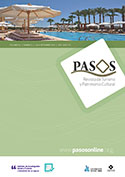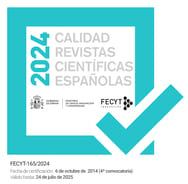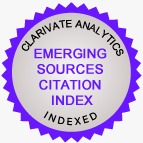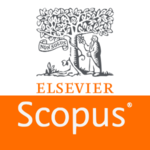El Rol del Avistamiento de Aves como estrategia del Turismo Sostenible: Un Análisis de la Literatura
DOI:
https://doi.org/10.25145/j.pasos.2025.23.053Palabras clave:
Turismo de naturaleza, Observación de aves, Aviturismo, Ecoturismo, SostenibilidadResumen
El propósito de este artículo es examinar la conceptualización y evolución del avistamiento de aves como una actividad de turismo natural, basándose en la literatura existente. Se realizó un análisis bibliométrico utilizando la base de datos Scopus, lo que resultó en la selección de 47 estudios relevantes. Este estudio identifica los componentes clave (factores, impulsores e investigaciones futuras) necesarios para fomentar el desarrollo de la observación de aves como una estrategia sostenible. El estudio actual comienza con la literatura existente sobre el turismo basado en la naturaleza siguiendo la clasificación de la OMT (Organización Mundial del Turismo), comenzando con las propuestas teóricas. El análisis se centró en revistas reconocidas en el tema, según el Índice de Países y Revistas Scimago (SJR), desde 2020 hasta 2023. Los hallazgos muestran que los estudios sobre turismo basado en la naturaleza y observación de aves publicados en los últimos cuatro años están principalmente relacionados con la conservación, el ecoturismo y el ecosistema. Los resultados de la presente investigación muestran información variada sobre enfoques de observación de aves, oportunidades y desafíos analizados a lo largo del tiempo.
Descargas
Datos de publicación
Perfil evaluadores/as N/D
Declaraciones de autoría
- Sociedad académica
- PASOS. Revista de Turismo y Patrimonio Cultural
- Editorial
- Instituto Universitario de Investigación Social y Turismo. Universidad de La Laguna (España) - Instituto Universitario da Maia ISMAI (Portugal)
Citas
Alaeddinoglu, F., & Can, A. (2011). Identification and classification of nature-based tourism resources: western Lake Van basin, Turkey. Procedia Social and Behavioral Sciences, 19, 198-207.
Aas, Ø., Jørgensen, F. M. O., Stensland, S., Reiertsen, T., & Dybsand, H. N. H. (2023). Your place or mine? Exploring birdwatching tourists’ behaviour disturbing birds in a nature reserve. European Journal of Wildlife Research, 69(3). https://doi.org/10.1007/s10344-023-01678-y
Afthanorhan, A., Awang, Z., & Fazella, S. (2017). Perception of tourism impact and support tourism development in Terengganu, Malaysia. Social Sciences, 6(3). https://doi.org/10.3390/socsci6030106
Alexandrino, E. R., Camboim, T. A., Chaves, F. G., Bovo, A. A. A., da Silva, M. A. G., da Silva, D. A. M., Moss, M., Souza, T. P., de Oliveira Santos, C., de Mattos Brito, C. B., Alcantara, M. C., Barbosa, K. V. C., Pina, P. I., Paolino, R. M., Bessi, T. C., de Campos, L. K. N., Souza, J. L. P., Costa, T. V. V, Müller, G. S., … Carvalho, G. (2022). Which birds are Brazilians seeing on urban and non-urban feeders? An analysis based on a collective online birding. Ornithology Research, 30(2), 104–117. https://doi.org/10.1007/s43388-022-00094-1
Boruah, I., Hasin, S., Popradit, A., Sawasdee, V., & Cheentam, S. (2021). Biodiversity of birds in urban green space for support ecotourism activities in valaya alongkorn rajabhat university Thailand. Journal of Environmental Management and Tourism, 12(4), 1131–1138. https://doi.org/10.14505//jemt.v12.4(52).25
Booth, J., Gaston, K., Evans, K., & Armsworth, P. (2011). The value of species rarity in biodiversity recreation: A birdwatching example. Biological Conservation, 144, 2728-2732.
Callaghan, C. T., Benson, I., Major, R. E., Martin, J. M., Longden, T., & Kingsford, R. T. (2020). Birds are valuable: the case of vagrants. Journal of Ecotourism, 19(1), 82–92. https://doi.org/10.1080/14724049.2019.1614010
Carvache-Franco, M., Segarra-Oña, M., & Carrascosa-López, C. (2019). Segmentation and motivations in eco-tourism: The case of a coastal national park. Ocean and Coastal Management, 178. https://doi.org/10.1016/j.ocecoaman.2019.05.014
Cheng, Y., Hu, F., Wang, J., Wang, G., Innes, J. L., Xie, Y., & Wang, G. (2022). Visitor satisfaction and behavioral intentions in nature-based tourism during the COVID-19 pandemic: A case study from Zhangjiajie National Forest Park, China. International Journal of Geoheritage and Parks, 10(1), 143–159. https://doi.org/10.1016/j.ijgeop.2022.03.001
Conradie, N., & Zyl, C. V. (2021). Investigating The Environmental and Avi-Values and Birding Behaviour of Gauteng’s Youth. African Journal of Hospitality, Tourism and Leisure, 10(5), 1695–1710. https://doi.org/10.46222/ajhtl.19770720-187
Conti, E., & Lexhagen, M. (2020). Instagramming nature-based tourism experiences: a netnographic study of online photography and value creation. Tourism Management Perspectives, 34. https://doi.org/10.1016/j.tmp.2020.100650
Collins-Kreiner, N., Malkinson, D., Labinger, Z., & Shtainvarz, R. (2013). Are birders good for birds? Bird conservation through tourism management in the Hula Valley, Israel. Tourism Management, 38, 31-42.
Chiu, H., Chan, C-S., Marafa, L. (2016). Local perception and preferences in nature tourism in Hong Kong. Tourism Management Perspectives, 20, 87-97.
Dileep Kumar, M., Govindarajo, N. S., & Khen, M. H. S. (2020). Effect of service quality on visitor satisfaction, destination image and destination loyalty – practical, theoretical and policy implications to avitourism. International Journal of Culture, Tourism, and Hospitality Research, 14(1), 83–101. https://doi.org/10.1108/IJCTHR-04-2019-0066
Dereka, M., Woźniakb, E.,& Kulczyka, S. (2019). Clustering nature-based tourists by activity. Social, economic and spatial dimensions. Tourism Management, 75, 509-521.
Divinagracia, L., Divinagracia, M., & Divinagracia, D. (2012). Digital Media-Induced Tourism: The Case of Nature-based Tourism (NBT) at East Java. Procedia Social and Behavioral Sciences, 57, 85-94.
Di-Clemente, E., Hernández-Mogollón, J. M., & López-Guzmán, T. (2020). Culinary tourism as an effective strategy for a profitable cooperation between agriculture and tourism. Social Sciences, 9(3). https://doi.org/10.3390/socsci9030025
Dybsand, H. N. H., Stensland, S., & Aas, Ø. (2023). The influence of motivation on birdwatcher satisfaction and destination loyalty: the case of Hornøya, Norway. Journal of Ecotourism, 22(1), 25–42. https://doi.org/10.1080/14724049.2021.2016776
Echeverri, A., Smith, J. R., MacArthur-Waltz, D., Lauck, K. S., Anderson, C. B., Vargas, R. M., Quesada, I. A., Wood, S. A., Chaplin-Kramer, R., & Daily, G. C. (2022). Biodiversity and infrastructure interact to drive tourism to and within Costa Rica. Proceedings of the National Academy of Sciences of the United States of America, 119(11). https://doi.org/10.1073/pnas.2107662119
Fossgard, K., & Fredman, P. (2019). Dimensions in the nature-based tourism experiencescape: An explorative analysis. Journal of Outdoor Recreation and Tourism, 28. https://doi.org/10.1016/j.jort.2019.04.001
García-Jiménez, R., Pérez-García, J. M., Margalida, A., & Morales-Reyes, Z. (2022). Avian scavengers’ contributions to people: The cultural dimension of wildlife-based tourism. Science of the Total Environment, 806. https://doi.org/10.1016/j.scitotenv.2021.150419
Ghermandi, A., Camacho-Valdez, V., & Trejo-Espinosa, H. (2020). Social media-based analysis of cultural ecosystem services and heritage tourism in a coastal region of Mexico. Tourism Management, 77. https://doi.org/10.1016/j.tourman.2019.104002
González Barahona, P., Barrena González, J., Lagar Timón, D., Lozano Parra, J., & Pulido Fernández, M. (2021). Identification of tourist resources for the design of thematic routes in the natural corridor of the Armorican Arch of Cáceres (Extremadura, SW Spain). International Journal of Geoheritage and Parks, 9(1), 69–81. https://doi.org/10.1016/j.ijgeop.2020.12.001
Guimaraes, M., Nunes, L., Madureira, L., Santos, J., Boski, T., & Dentinho, T. (2015). Measuring birdwatchers preferences: A case for using online networks and mixed-mode surveys. Tourism Management, 46, 102-113.
Harrill, R., Zuñiga-Collazos, A., Castillo-Palacio, M., & Padilla-Delgado, L. M. (2023). An Exploratory Attitude and Belief Analysis of Ecotourists’ Destination Image Assessments and Behavioral Intentions. Sustainability (Switzerland), 15(14). https://doi.org/10.3390/su151411349
Hybers, T., & Bennett, J. (2003). Inter-firm cooperation at nature-based tourism destinations. The journal of socio-economics, 32, 571-587.
Hunt, C. A., & Harbor, L. C. (2019). Pro-environmental tourism: Lessons from adventure, wellness and eco-tourism (AWE) in Costa Rica. Journal of Outdoor Recreation and Tourism, 28. https://doi.org/10.1016/j.jort.2018.11.007
Iswandaru, D., Hariyono, & Rohman, F. (2023). Birding and Avitourism: Potential Analysis of Birds in the Buffer Villages Around Conservation Area. Jurnal Sylva Lestari, 11(2), 247–269. https://doi.org/10.23960/jsl.v11i2.681
Janeczko, E., Łukowski, A., Bielinis, E., Woźnicka, M., Janeczko, K., & Korcz, N. (2021). “Not just a hobby, but a lifestyle”: Characteristics, preferences and self-perception of individuals with different levels of involvement in birdwatching. PLoS ONE, 16(7 July). https://doi.org/10.1371/journal.pone.0255359
Job, H., & Paesler, F. (2013). Links between nature-based tourism, protected areas, poverty alleviation and crises- The example of Wasini Island (Kenya). Journal of Outdoor Recreation and Tourism, 1-2, 18-28.
John, J. R., & Kiwango, H. (2021). Further additions to the avifauna of the isunkaviola plateau, ruaha national park, south-central tanzania, emphasize its ornithological importance. Scopus: Journal of East African Ornithology, 41(1), 24–34. https://www.scopus.com/inward/record.uri?eid=2-s2.0-85103068898&partnerID=40&md5=2ab72a118d412b6b02f8447c4dcbafd2
Kim, Y., Kim, C. ki, Lee, D. K., Lee, H. woo, & Andrada, R. I. T. (2019). Quantifying nature-based tourism in protected areas in developing countries by using social big data. Tourism Management, 72, 249–256. https://doi.org/10.1016/j.tourman.2018.12.005
Kim, M., & Thapa, B. (2018). Perceived value and flow experience: Application in a nature-based tourism context. Journal of Destination Marketing & Management, 8, 373-384.
Konu, H. (2015). Developing nature-based tourism products with customers by utilizing the Delphi method. Tourism Management Perspectives, 14, 42-54.
Koki, J. N. (2021). The Beliefs of Local Communities towards the Conservation of Birds. Journal of Human, Earth, and Future, 2(1), 36–45. https://doi.org/10.28991/HEF-2021-02-01-04
Kruger, M., & Viljoen, A. (2023). Bird(er)s of a feather? A typology of birders to South African national parks based on their behavioural involvement. Annals of Leisure Research, 26(1), 1–26. https://doi.org/10.1080/11745398.2020.1813041
Lestari, F., Tua, I. N., Muzanni, A., Nugroho, D. F., Wibowo, A. A., Wartono, T., Widanarko, B., Saepullah, A., Modjo, R., Farida, M., Erwandi, D., Aryani, D. D., Kadir, A., Widiatmoko, A. I., Hendra, Herwanto, Z. J., Tejamaya, M., Hamid, R. A., Fatmah, … Hafids, M. F. (2023). NDVI, suitability, and carrying capacity of Dieng Plateau Forests to sustain Dieng Kulon Village tourism, Central Java, Indonesia. Biodiversitas, 24(1), 282–289. https://doi.org/10.13057/biodiv/d240134
Liu, T., Ma, L., Cheng, L., Hou, Y., & Wen, Y. (2021). Is ecological birdwatching tourism a more effective way to transform the value of ecosystem services?—a case study of birdwatching destinations in mingxi county, china. International Journal of Environmental Research and Public Health, 18(23). https://doi.org/10.3390/ijerph182312424
Luzuriaga-Aveiga, V. E., & Cisneros-Heredia, D. F. (2022). Seasonal turnover of avian community assembly in a highly fragmented Tumbesian dry forest of southwestern Ecuador. Neotropical Biodiversity, 8(1), 229–241. https://doi.org/10.1080/23766808.2022.2076784
Maniatis, S., Nastos, P. T., Moustris, K., Polychroni, I. D., & Kamoutsis, A. (2020). Human thermal sensation over a mountainous area, revealed by the application of ANNs: the case of Ainos Mt., Kefalonia Island, Greece. International Journal of Biometeorology, 64(12), 2033–2045. https://doi.org/10.1007/s00484-020-01993-y
Ma, A. T. H., Ng, S. L., Cheung, L. T. O., & Lam, T. W. L. (2021). How do uses of and gratifications from social media platforms drive responsible birdwatching behavior? Global Ecology and Conservation, 27. https://doi.org/10.1016/j.gecco.2021.e01614
Maldonado, J., Moreno-Sánchez, R., Espinoza, S., Bruner, A., Garzón, N., & Myers, J. (2018). Peace is much more than doves: The economic benefits of bird-based tourism as a result of the peace treaty in Colombia. World Development, 106, 78-86.
Matilainen, A., & Lähdesmäki, M. (2014). Nature-based tourism in private forests: Stakeholder management balancing the interests of entrepreneurs and forest owners. Journal of Rural Studies, 35, 70-79.
Margaryan, L., & Stensland, S. (2017). Sustainable by nature? The case of (non)adoption of eco-certification among the nature-based tourism companies in Scandinavia. Journal of Cleaner Production, 162, 559-567.
McFadden, T., Herrera, A., & Navedo, J. (2017). Waterbirds responses to regular passage of a birdwatching tour boat: Implications for wetland management. Journal for Nature Conservation, 40, 42-48.
Meric, H. J., & Hunt, J. (1998). Ecotourists' motivational and demographic characteristics: A case of North Carolina travelers. Journal of Travel Research, 36(4), 57.
Minic, N. (2022). DEVELOPMENT OF BIRDWATCHING TOURISM – A CASE STUDY IN WESTERN SERBIA. Journal of Environmental Protection and Ecology, 23(6), 2332–2341. https://www.scopus.com/inward/record.uri?eid=2-s2.0-85140109384&partnerID=40&md5=9bd49ac848779425befc873d520852d7
Mokhli, N., Manohar, M., & Lim, E. A. L. (2023). DESIGNING MEANINGFUL INTERPRETIVE EXHIBITS AT ECOTOURISM SITES TO INFLUENCE BEHAVIOUR INTENTION. Malaysian Forester, 86(1), 90–108. https://www.scopus.com/inward/record.uri?eid=2-s2.0-85145719590&partnerID=40&md5=51149130af812f1171a685c1f714605e
Mokhter, N., Akhsan, M. A., Amran, M. A., Lee, T. J., Zainal, M.-Z., Abdul-Latiff, M. A. B., & Norazlimi, N. A. (2022). BIRDING HOTSPOTS AND IMPORTANT BIRD SPECIES AS TOOLS TO PROMOTE AVITOURISM IN PULAU TINGGI, JOHOR, MALAYSIA. Journal of Sustainability Science and Management, 17(11), 110–120. https://doi.org/10.46754/jssm.2022.11.012
Morán-Ordóñez, A., Hermoso, V., & Martínez-Salinas, A. (2022). Multi-objective forest restoration planning in Costa Rica: Balancing landscape connectivity and ecosystem service provisioning with sustainable development. Journal of Environmental Management, 310. https://doi.org/10.1016/j.jenvman.2022.114717
Mosisa, G. B., Tassie, N., & Dejene, S. W. (2023). Diversity and abundance of avifauna in the Suba Forest area, central Ethiopia. Ostrich, 94(3), 204–216. https://doi.org/10.2989/00306525.2023.2274360
Ortega-Álvarez, R., & Calderón-Parra, R. (2021). Linking biological monitoring and wildlife ecotourism: a call for development of comprehensive community-based projects in search of sustainability. Environment, Development and Sustainability, 23(3), 4149–4161. https://doi.org/10.1007/s10668-020-00761-7
Pahlad, R., & Procheş, Ş. (2021). Birdwatching in a southern African context: explaining highlights on bird lists. South African Geographical Journal, 103(3), 411–419. https://doi.org/10.1080/03736245.2021.1894597
Pease, B. S., Gilbert, N. A., Casola, W. R., & Akamani, K. (2023). The Steller’s Sea-Eagle in North America: An economic assessment of birdwatchers travelling to see a vagrant raptor. People and Nature. https://doi.org/10.1002/pan3.10527
Palacio, V. (1997). Identifying ecotourists in Belize through benefit segmentation: A preliminary analysis. Journal of Sustainable Tourism, 5(3), 234–243.
Pérez-Jorge, S., Louzao, M., Oro, D., Pereira, T., Corne, C., Wijtten, Z., Gomes, I., Wambua, J., &Christiansen, F. (2017). Estimating the cumulative effects of the nature-based tourism in a coastal dolphin population from southern Kenya. Deep-Sea Research II, 140, 278-289.
Perez, V., Guerrero, F., Gonzalez, M., Perez, F., & Caballero, R. (2013). Composite indicator for the assessment of sustainability: The case of Cuban nature-based tourism destinations. Ecological Indicators, 29, 316-324.
Perera, P., Jayakody, C., Jayapali, U., & Newsome, D. (2023). Challenges and opportunities for the resumption of nature tourism in post-pandemic Sri Lanka. International Journal of Geoheritage and Parks, 11(2), 234–246. https://doi.org/10.1016/j.ijgeop.2023.03.001
Priskin, J. (2001). Assessment of natural resources for nature-based tourism: the case of the Central Coast Region of Western Australia. Tourism Management, 22, 637-648.
Qiao, H., Orr, M., Yang, Q., Zhan, X., Lei, F., & Hughes, A. C. (2023). Global birdwatching data reveal uneven consequences of the COVID-19 pandemic. Biological Conservation, 288. https://doi.org/10.1016/j.biocon.2023.110351
Randler, C., Friedrich, S., & Koch (née Nagel), S. (2023). Psychological restoration, place attachment and satisfaction in birders and non-birding visitors. Journal of Outdoor Recreation and Tourism, 44. https://doi.org/10.1016/j.jort.2023.100679
Ren, J., Su, K., Zhou, Y., Hou, Y., & Wen, Y. (2022). Why Return? Birdwatching Tourists’ Revisit Intentions Based on Structural Equation Modelling. Sustainability (Switzerland), 14(21). https://doi.org/10.3390/su142114632
Rolim, A. M., Pinto, V. D., & Rosa, M. P. (2021). Birdwatching and birding by ear: An accessible and inclusive tourism proposal for the city of lagos. Journal of Accessibility and Design for All, 11(1), 48–85. https://doi.org/10.17411/jacces.v11i1.316
Rurangwa, M. L., & Whittaker, R. J. (2020). Making space for birds: Sourcing solutions from the mountain gorilla conservation model in Rwanda. Journal for Nature Conservation, 54. https://doi.org/10.1016/j.jnc.2020.125797
Rahayuningsih, T., Muntasib, H., & Prasetyob, L. (2016). Nature Based Tourism Resources Assessment Using Geographic Information System (GIS): Case Study in Bogor. Procedia Environmental Sciences, 33, 365-375.
Santos, M., Carvalho, D., Luis, A., Bastos, R., Hughes, S., & Cabral, J. (2019). Can recreational ecosystem services be inferred by integrating nonparametric scale estimators within a modelling framework? The birdwatching potential index as a case study. Ecological Indicators, 103, 395-409.
Sánchez-rivero, M., Sánchez-martín, J.-M., & Rangel, M. C. R. (2020). Characterization of birdwatching demand using a logit approach: Comparative analysis of source markets (National vs Foreign). Animals, 10(6), 1–19. https://doi.org/10.3390/ani10060965
Schwoerer, T., & Dawson, N. G. (2022). Small sight—Big might: Economic impact of bird tourism shows opportunities for rural communities and biodiversity conservation. PLoS ONE, 17(7 July). https://doi.org/10.1371/journal.pone.0268594
Silva, S., Braga, B., Brasil, L., Baía-Júnior, P., & Guimarães, D. (2022). The use of Passeriformes in the eastern Amazonia of Brazil: culture encourages hunting and profit encourages trade. ORYX, 56(2), 218–227. https://doi.org/10.1017/S0030605320000551
Stemmer (formerly Jathe), K., Aas, Ø., Veisten, K., & Lindberg, K. (2022). Assessing recreation specialization to guide nature-based tourism development: A hybrid choice model of birder destination preferences. Journal of Outdoor Recreation and Tourism, 39. https://doi.org/10.1016/j.jort.2022.100516
Stocco, A., & Pranovi, F. (2023). The paradoxical need for human intervention in the conservation of natural environments in Venice lagoon. Scientific Reports, 13(1). https://doi.org/10.1038/s41598-023-33754-3
Su, K., Ren, J., Qin, Y., Hou, Y., & Wen, Y. (2020). Efforts of indigenous knowledge in forest and wildlife conservation: A case study on bulang people in mangba village in yunnan province, china. Forests, 11(11), 1–16. https://doi.org/10.3390/f11111178
Slater, C., Cam, G., Qi, Y., Liu, Y., Guay, P. J., & Weston, M. A. (2019). Camera shy? Motivations, attitudes and beliefs of bird photographers and species-specific avian responses to their activities. Biological Conservation, 237, 327–337. https://doi.org/10.1016/j.biocon.2019.07.016
Sørensen, F., & Grindsted, T. S. (2021). Sustainability approaches and nature tourism development. Annals of Tourism Research, 91. https://doi.org/10.1016/j.annals.2021.103307
Spalding, M. D., Longley-Wood, K., McNulty, V. P., Constantine, S., Acosta-Morel, M., Anthony, V., Cole, A. D., Hall, G., Nickel, B. A., Schill, S. R., Schuhmann, P. W., & Tanner, D. (2023). Nature dependent tourism – Combining big data and local knowledge. Journal of Environmental Management, 337. https://doi.org/10.1016/j.jenvman.2023.117696
Stemmer (formerly Jathe), K., Aas, Ø., Veisten, K., & Lindberg, K. (2022). Assessing recreation specialization to guide nature-based tourism development: A hybrid choice model of birder destination preferences. Journal of Outdoor Recreation and Tourism, 39. https://doi.org/10.1016/j.jort.2022.100516
Tan, X., Yan, P., Liu, Z., Qin, H., & Jiang, A. (2023). Demographics, behaviours, and preferences of birdwatchers and their implications for avitourism and avian conservation: A case study of birding in Nonggang, Southern China. Global Ecology and Conservation, 46. https://doi.org/10.1016/j.gecco.2023.e02552
Trišić, I., Stanić Jovanović, S., Štetić, S., Nechita, F., & Candrea, A. N. (2023). Satisfaction with Sustainable Tourism—A Case of the Special Nature Reserve “Meadows of Great Bustard”, Vojvodina Province. Land, 12(8). https://doi.org/10.3390/land12081511
Tirasattayapitak, S., Chaiyasain, C., & Beetonc, R.J.S. (2015). The impacts of nature-based adventure tourism on children in a Thai village. Tourism Management Perspectives, 15, 122-127.
Tyrväinena, L., Uusitalob, M., Silvennoinenc, H., & Hasud, E. (2014). Towards sustainable growth in nature-based tourism destinations: Clients’ views of land use options in Finnish Lapland. Landscape and Urban Planning, 122, 1-15.
Vas, K. (2017). Birding blogs as indicators of birdwatcher characteristics and trip preferences: Implications for birding destination planning and development. Journal of Destination Marketing & Management, 6, 33-45.
Wang, W., Chen, J., & Prebensenc, N. (2018). Market analysis of value-minded tourists: Nature-based tourism in the Arctic. Journal of Destination Marketing & Management, 8, 82-89.
World Tourism Organization (2019), UNWTO Tourism Definitions, UNWTO, Madrid, DOI: https://doi.org/10.18111/9789284420858.
World Tourism Organization (2019), UNWTO World Tourism Barometer, UNWTO, Madrid, DOI: https://doi.org/10.18111/wtobarometereng.
Xu, J., Yan, P., Liu, Z., Qin, H., & Jiang, A. (2023). Avitourism as an aspect of sustainable mountain development: a case study from Southern China. Eco Mont-Journal on Protected Mountain Areas Research & Management, 15(1), 38–45. https://doi.org/10.1553/eco.mont-15-1s38
Zheng, J., Bai, X., Na, L., & Wang, H. (2022). Tourists’ Spatial–Temporal Behavior Patterns Analysis Based on Multi-Source Data for Smart Scenic Spots: Case Study of Zhongshan Botanical Garden, China. Processes, 10(2). https://doi.org/10.3390/pr10020181
Zorlu, K., & Dede, V. (2023). Evaluation of nature-based tourism potential in protected and sensitive areas by CRITIC and PROMETHEE-GAIA methods. International Journal of Geoheritage and Parks, 11(3), 349–364. https://doi.org/10.1016/j.ijgeop.2023.05.004
Descargas
Publicado
Cómo citar
Número
Sección
Licencia
Derechos de autor 2024 LINA MARCELA PADILLA-DELGADO, Marysol Castillo-Palacios, Alexander Zuñiga-Collazos

Esta obra está bajo una licencia internacional Creative Commons Atribución-NoComercial-SinDerivadas 4.0.
Confirmo que el trabajo es original (de mi/nuestra autoría), y que no se someterá a otras revistas o publicaciones hasta la resolución definitiva del proceso de revisión en PASOS, RTPC.
Autorizo la publicación de mi trabajo por PASOS, RTPC de acceso abierto y gratuito en cualquiera de los formatos que estime oportunos, por un plazo indeterminado y a título de colaboración no remunerada.
Asimismo, el/los autor/es entiende/n que el trabajo publicado podrá vincularse o depositarse en cualquier servidor o ser incluido en otras publicaciones (republicación), siempre y cuando el nuevo lugar y/o la nueva edición referencie la publicación original y reconozca la autoría y la propiedad del copyright de las publicaciones de PASOS RTPC.
Los/as autores/as entienden que se realizará una comprobación de plagio-autoplagio, pudiendo retirarse el artículo en cualquier momento del flujo editorial










